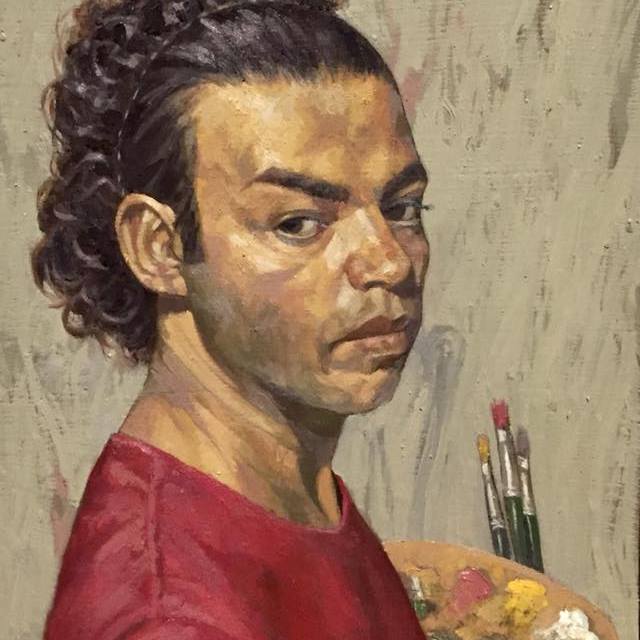
Born in Cairo in 1970 and raised in Yemen, Walid Ebeid graduated with a BFA from the Faculty of Fine Arts, Helwan University, in 1992. His work has been exhibited internationally, earning him a reputation for his powerful expressive style.
ArtTalks is proud to present People You May Know, the first solo exhibition of Walid EBEID at the Gallery.
The controversial and provocative paintings of Walid Ebeid range from poignant studies of the female figure to People We May Know in Egyptian society. Notorious for tackling difficult issues like sexuality, immigration, politics, and oppression, Walid Ebeid brings attention to humanity’s sufferings, struggles, and hopes. His realistic oil paintings have broken many social and moral taboos and challenged different customs and traditions imposed by society to defend women and the oppressed of all categories and social classes.
Ebeid doesn’t portray women as supermodels with perfect bodies and outstanding outfits. Instead, he prefers to dig deeper to touch their souls and feel their pain. In his paintings, each detail tells a new story. You can see the agonized look on the faces of his painted prostitutes or young girls forced into early marriage and feel the oppression they encounter every day.
It is no secret that women and women’s issues are his biggest concerns. “I myself cannot fathom the reason I hold all this empathy towards women—as if women were the reason for me being an artist.” Ebeid listens to people as a psychiatrist to really feel their problems and the challenges they encounter: “The artist is a lawyer who defends an accused person when society plays the role of the judge. I am generally biased for injustice and those stripped off their rights.”
For Ebeid creating art is an inspiration and is just as enigmatic to me as talent itself. After graduating with a philosophical project that portrayed love, death, and art, the Cairo-born artist decided to get closer to people’s real lives and give them a voice to express their hopes and dreams. His searches and experiments went through several phases to reach his current phase, which he calls “realistic expressionism.” His artwork resembles him closely. It is rendered in a state of truth because it expresses what occupies people’s minds, even when they are unable or unwilling to voice it loudly, and what they’re feeling. His art reflects reality and the changes around us and mainly focuses on strange things that we may quickly lose interest in but leave a lasting impact on.
“My art is for the people. And it is why people can relate to my art as if it is their own, and why they sometimes ask me to execute certain images, believing that I can express their feelings.”